Down a long-forgotten dirt road and between two fields in dusty Desha County, 25 headstones mark the graves of those laid to rest at Rohwer Relocation Center.
Creation of The Headstones
The Rohwer Relocation Center Memorial Cemetery was created in 1942 after the death of an infant.
Commissioning the carving of traditionally used granite monuments was too costly for the internees or the camp as a whole. Due to limited access to resources and because no money was initially put aside for a burial site, internees created headstones and site markers from concrete made of local sands, spread local gravel throughout the site, and repurposed the barbed wire from the fences that contained them within Rohwer Relocation Center. The edges of the cemetery are lined with concrete pillars that once held rows of barbed wire in place.
Four rows of simple concrete headstones bear similar features. Still, each displays some uniqueness bearing the full name of the deceased, birth and death date, and in many instances religious affiliation. These stones were funded by the Social Welfare Department and cast on-site by the internees. Each marker is set on a cast concrete floor with an inset to hold flowers in front of the marker. The inside portion of the flower holders is made of metal and is likely made from repurposed cans. This practice began in 1943 and continued until the center closed in 1945.
Identification And Assessment
Headstones fall into three distinct style categories that have been identified for restoration as style sets “A,” “B,” and “C.”
Type “A” is distinguished by the flower holder base being integral to the headstone base. The condition of type “A” headstones before restoration feature an exterior layer of mortar on only the front and sides.
Type “B” is distinguished by the flower holder cast as a separate unit. Type “B” stones, before restoration, were in uniformly poor condition compared to the other types. Most of the stones are cracked, broken up along the cracks, and have sustained loss of concrete. This is the most prevalent type.
Type “C” is also distinguished by the size of the stone. “C” stones are much smaller than the other stones and signify infant burials.
*The banner photo shows volunteer inmates building Rohwer.
